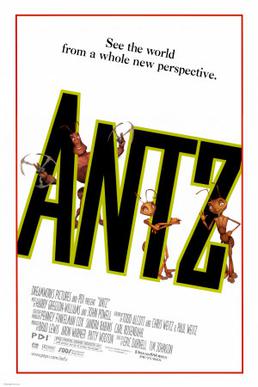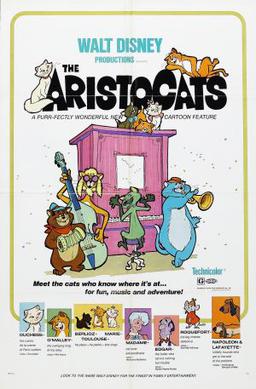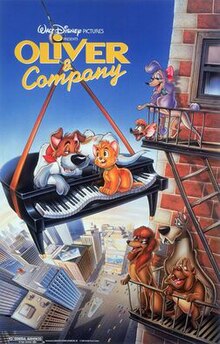
Who Framed Roger Rabbit is a 1988 American fantasy comedy film directed by Robert Zemeckis from a screenplay written by Jeffrey Price and Peter S. Seaman. It is loosely based on the 1981 novel Who Censored Roger Rabbit? by Gary K. Wolf. The film stars Bob Hoskins, Christopher Lloyd, Stubby Kaye, Joanna Cassidy, and the voices of Charles Fleischer and an uncredited Kathleen Turner. Combining live-action and animation, the film is set in an alternate history Hollywood in 1947, where humans and cartoon characters co-exist. Its plot follows Eddie Valiant, a private investigator with a grudge against toons, who must help exonerate Roger Rabbit, a toon framed for murder.

The Lion King is a 1994 American animated musical coming-of-age drama film produced by Walt Disney Feature Animation and released by Walt Disney Pictures. The film was directed by Roger Allers and Rob Minkoff and produced by Don Hahn, from a screenplay written by Irene Mecchi, Jonathan Roberts, and Linda Woolverton. The film features an ensemble voice cast that includes Matthew Broderick, Moira Kelly, James Earl Jones, Jeremy Irons, Jonathan Taylor Thomas, Nathan Lane, Ernie Sabella, Whoopi Goldberg, Cheech Marin, Rowan Atkinson, Niketa Calame, and Robert Guillaume. Its original songs were written by composer Elton John and lyricist Tim Rice, with a score by Hans Zimmer. Inspired by African wildlife, the story is modelled primarily on William Shakespeare's stage play Hamlet with some influence from the Biblical stories of Joseph and Moses, and follows a young heir apparent who is forced to flee after his uncle kills his father and usurps the throne. After growing up in exile, the rightful king returns to challenge the usurper and end his tyrannical rule over the kingdom.

Oliver Twist; or, The Parish Boy's Progress, is the second novel by English author Charles Dickens. It was originally published as a serial from 1837 to 1839 and as a three-volume book in 1838. The story follows the titular orphan, who, after being raised in a workhouse, escapes to London, where he meets a gang of juvenile pickpockets led by the elderly criminal Fagin, discovers the secrets of his parentage, and reconnects with his remaining family.

Antz is a 1998 American animated adventure comedy film produced by DreamWorks Animation and Pacific Data Images, and distributed by DreamWorks Pictures. It was directed by Eric Darnell and Tim Johnson from a screenplay by Todd Alcott and the writing team of Chris and Paul Weitz. The film stars the voices of Woody Allen, Sharon Stone, Jennifer Lopez, Sylvester Stallone, Christopher Walken, Dan Aykroyd, Anne Bancroft, Danny Glover and Gene Hackman. Some of the main characters share facial similarities with the actors who voice them. The film involves an anxious worker ant, Z (Allen), who falls in love with Princess Bala (Stone). When the treacherous scheming of the arrogant officer General Mandible (Hackman) threatens to wipe out the entire worker population, Z must save the ant colony from the flooded tunnel and strives to make social inroads.

The Rescuers Down Under is a 1990 American animated adventure film produced by Walt Disney Feature Animation and released by Walt Disney Pictures. It is the sequel to Disney's 1977 animated feature film The Rescuers, which was based on the novels by Margery Sharp. In The Rescuers Down Under, Bernard and Bianca travel to the Australian Outback to save a young boy named Cody from a villainous poacher who wants to capture an endangered golden eagle for money. Directed by Hendel Butoy and Mike Gabriel from a screenplay by Jim Cox, Karey Kirkpatrick, Byron Simpson, and Joe Ranft, the film features the voices of Bob Newhart, Eva Gabor, John Candy, and George C. Scott.

The Little Mermaid is a 1989 American animated musical fantasy film produced by Walt Disney Feature Animation in association with Silver Screen Partners IV and released by Walt Disney Pictures. It is loosely based on the 1837 Danish fairy tale of the same name by Hans Christian Andersen. The film was written and directed by John Musker and Ron Clements and produced by Musker and Howard Ashman, who also wrote the film's songs with Alan Menken. Menken also composed the film's score. Featuring the voices of René Auberjonois, Christopher Daniel Barnes, Jodi Benson, Pat Carroll, Paddi Edwards, Buddy Hackett, Jason Marin, Kenneth Mars, Ben Wright and Samuel E. Wright, The Little Mermaid tells the story of a teenage mermaid princess named Ariel, who dreams of becoming human and falls in love with a human prince named Eric, which leads her to make a magic deal with the sea witch, Ursula, to become human and be with him.

The Great Mouse Detective is a 1986 American animated mystery adventure film produced by Walt Disney Feature Animation and released by Walt Disney Pictures. It is based on the children's book series Basil of Baker Street by Eve Titus and Paul Galdone, and was written and directed by John Musker, Dave Michener, Ron Clements, and Burny Mattinson in their feature directorial debuts. Featuring the voices of Vincent Price, Barrie Ingham, Val Bettin, Susanne Pollatschek, Candy Candido, Diana Chesney, Eve Brenner, and Alan Young, the film's plot follows Basil of Baker Street, a mouse detective who undertakes to help the young mouse Olivia find and save her father from the criminal mastermind and Basil's sworn enemy, Professor Ratigan.

The Aristocats is a 1970 American animated comedy film produced by Walt Disney Productions and distributed by Buena Vista Distribution. It is directed by Wolfgang Reitherman and written by Ken Anderson, Larry Clemmons, Eric Cleworth, Vance Gerry, Julius Svendsen, Frank Thomas and Ralph Wright. It is the final Disney animated film made with the involvement of Walt Disney Productions' co-founder Roy O. Disney before his death on December 20, 1971. The film is based on a story by Tom McGowan and Tom Rowe, and revolves around a family of aristocratic cats, and how an alley cat acquaintance helps them after a butler has kidnapped them to gain his mistress's fortune which was intended to go to them. The film features the voices of Phil Harris, Eva Gabor, Hermione Baddeley, Dean Clark, Sterling Holloway, Scatman Crothers, and Roddy Maude-Roxby.

Jeffrey Katzenberg is an American media proprietor. He was the chairman of Walt Disney Studios from 1984 to 1994, a position in which he oversaw production and business operations for the company's feature films. After departing Disney, he co-founded DreamWorks SKG in 1994, where he served as the company's CEO and producer of the Oscar winning film American Beauty and many of its animated franchises including Shrek, Madagascar, Kung Fu Panda, and How to Train Your Dragon until stepping down from the title in 2016. He has since founded the venture capital firm WndrCo in 2017, which invests in digital media projects, and launched Quibi in 2020, a defunct short-form mobile video platform which lost US$1.35 billion in seven months.

William "Bill" Sikes is a fictional character and one of the main antagonists in the 1838 novel Oliver Twist by Charles Dickens. Sikes is a malicious criminal in Fagin's gang, and a vicious robber and murderer. Throughout much of the novel Sikes is shadowed by his “bull-terrier” dog Bull's-eye.

The Land Before Time is a 1988 animated adventure film directed and co-produced by Don Bluth from a screenplay by Stu Krieger and a story by Judy Freudberg and Tony Geiss; it is executive produced by Steven Spielberg, George Lucas, Kathleen Kennedy, and Frank Marshall. The film stars the voices of Gabriel Damon, Candace Hutson, Judith Barsi, and Will Ryan with narration provided by Pat Hingle. It is the first film in The Land Before Time franchise.

Oliver Twist is a 2005 drama film directed by Roman Polanski. The screenplay by Ronald Harwood adapts Charles Dickens's 1838 novel of the same name. It is an international co-production of the United Kingdom, the Czech Republic and France.

Gary Trousdale is an American animator, film director, screenwriter and storyboard artist. He is best known for directing films such as Beauty and the Beast (1991), The Hunchback of Notre Dame (1996), and Atlantis: The Lost Empire (2001). He frequently works with Kirk Wise and Don Hahn.

Mr Brownlow is a character from the 1838 novel Oliver Twist by Charles Dickens. Brownlow is a bookish and kindly middle-aged bachelor who helps Oliver escape the clutches of Fagin. He later adopts Oliver Twist by the end of the novel.

Charley Bates is a supporting character in the Charles Dickens's 1838 novel Oliver Twist. He is a young boy and member of Fagin's gang of pickpockets, and sidekick to the Artful Dodger, whose skills he admires unreservedly. Bill Sikes's murder of Nancy shocks him so much that at the end of the novel he leaves London to become an agricultural labourer.

Fagin is a fictional character and the secondary antagonist in Charles Dickens's 1838 novel Oliver Twist. In the preface to the novel, he is described as a "receiver of stolen goods". He is the leader of a group of children whom he teaches to make their livings by pickpocketing and other criminal activities, in exchange for shelter. A distinguishing trait is his constant and insincere use of the phrase "my dear" when addressing others. At the time of the novel, he is said by another character, Monks, to have already made criminals out of "scores" of children. Nancy, who is the lover of Bill Sikes, is confirmed to be Fagin's former pupil.

Oliver Twist is the title character and protagonist of the 1838 novel Oliver Twist by Charles Dickens. He was the first child protagonist in an English novel.

Waking Sleeping Beauty is a 2009 American documentary film directed by Disney film producer Don Hahn and produced by Hahn and former Disney executive Peter Schneider. The film documents the history of Walt Disney Feature Animation from 1984 to 1994, covering the rise of a period referred to as the Disney Renaissance.

Live-action animated is a film genre that combines live-action filmmaking with animation. Projects that are both live-action and computer-animated tend to have fictional characters or figures represented and characterized by cast members through motion capture and then animated and modeled by animators. Films that are live-action and traditionally animated use hand-drawn, computer-generated imagery (CGI), or stop-motion animation.

Oliver Twist is a 1974 American animated adventure musical drama film directed by Hal Sutherland that is based on Charles Dickens's 1838 novel of the same name. The film was the second and last to be produced by Filmation and distributed by Warner Bros. Pictures. Davy Jones, who played The Artful Dodger in the original Broadway production of Oliver!, reprises his role.




















